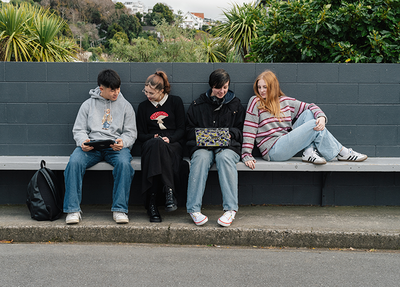White supremacist ‘manifesto’ banned
The ‘manifesto’ of a convicted murderer and white supremacist aimed at inspiring others to copy him has been banned, Chief Censor David Shanks announced today.
2083: A European Declaration of Independence, also known as the Oslo Manifesto, was written by Anders Breivik, a far-right Norwegian terrorist who killed 77 people on July 22, 2011, in a bomb attack in Oslo and a mass shooting at a summer camp for children. The ‘manifesto’ has been classified as objectionable under the Films, Videos & Publications Classification Act 1993.
Mr Shanks said the Classification Office knew of the ‘manifesto’ for some time and was increasingly concerned by an apparent trend for terrorists, in particular white supremacist killers, to produce this kind of document to spread and promote their beliefs. The decision to call the Oslo Manifesto in for formal classification was made following review of the Royal Commission report into the March 15 terrorist attack, which highlighted the influence of the Oslo Manifesto in relation to that attack.
“We are mindful that we do not want to draw attention to publications like this, but given the trends we are seeing, and the role that this particular document played in the March 15 terrorist’s actions, we decided that we needed to classify it,” Mr Shanks said.
The Chief Censor used his “call in” power to proactively conduct the classification and the Office conducted a targeted consultation including various faith communities, youth, academics, tech industry experts and a survivor of the Oslo terror attacks.
“It was important for us to seek a range of views from across the community on the issues and potential harm this ‘manifesto’ presents. Everyone we spoke to had concerns about this document, but some thought that the best response to it might be to keep it available so that it could be debated. Others considered that it presented the same risks and harms as other terrorist promotional documents that had been banned in New Zealand, and should be treated the same way.
“These discussions greatly assisted our classification. In analysing this document, we found that it provided followers with a rationale for murdering innocents, while also providing extensive detail on tactics and methods to carry out an attack. The role this particular document played in the horrific March 15 attacks in Aotearoa cannot be ignored. Ultimately we found that this document presented similar risks and harms to the public as other terrorist promotional documents we have banned under New Zealand law.
“Most people in Aotearoa reading this document will find it repellent rather than persuasive. However this document is not intended for most people. It is targeted at the very small number of individuals who may be exploring white supremacist ideology. In the hands of that audience, given the status Breivik has among some extremists and the detailed ‘how to’ nature of the text, this document presents a real risk to the safety and security of all New Zealanders.
“This decision means it is an offence to possess or distribute this publication. People who have downloaded this document, or printed it, should destroy any copies.”
Mr Shanks said the decision highlighted the problem of ‘manifestos’ being available online.
“The volume and reach of this type of content online remains a large and serious issue. We will draw on what we learned from this consultation to feed into the Government’s review of content regulation.”
While the publication is banned, academic researchers, analysts and journalists seeking to inform the public will still have access to the publication in New Zealand through the s 44 exemption process.
Documents
Media
Please direct media enquiries to media@classificationoffice.govt.nz
Support
Need to talk? Free call or text 1737 any time for support from a trained counsellor
Subscribe to our news
Stay up to date with news from the Classification Office.


